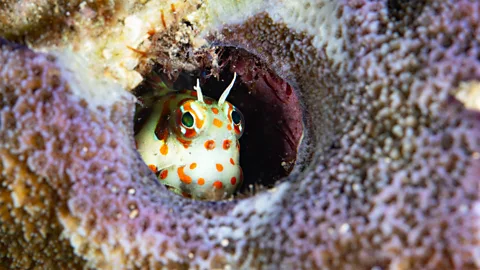From - BBC News
 Getty Images
Getty ImagesResearchers are unlocking the ancient secrets of the world's most diverse marine habitat. Could their discoveries help us save our oceans?
In an office wing of the Natural History Museum in London, two researchers slide open a plain storage cupboard door to reveal a hidden treasure: shelves of fossilised corals, up to 30 million years old, from the world's most diverse marine habitat. Some look like petrified brains, others like rocks with filigrane patterns.
"I like to look at things in the past and see if we can learn lessons from them," says Ken Johnson, with an eye on the fossils. Johnson is a palaeontologist and principal researcher at the museum's Earth Sciences department. Next to him stands Nadia Santodomingo, a marine biologist and geoscientist, and curator at the museum. They and their team collected the fossils in Indonesia more than a decade ago, working with colleagues from the Indonesian Geological Agency. The goal was to try and crack the secrets of an expanse of ocean known as the "coral triangle" – and, they hoped, to use those secrets to protect reefs today.
"Understanding how corals have responded to previous environmental changes can help us see how they might respond to future changes," says Johnson. In fact, the fossils not only led to a completely new perspective on marine life, but drew attention to important coral sanctuaries that had previously been overlooked – and which could become crucial refuges for species as the planet warms, the researchers say.
The 'Amazon of the Seas'
Sometimes called the Amazon of the Seas, the coral triangle is as species-rich and teeming with life as a lush rainforest. It spans Malaysia, the Philippines, Indonesia, Papua New Guinea, Timor Leste and the Solomon Islands. About 75% of all known coral species live there – amounting to more than 700 different species – as well as 3,000 species of reef fish and six of the world's seven marine turtle species.
"The coral triangle in South East Asia is the most diverse place on Earth," in terms of marine habitats, says Johnson. "There are more marine species there than anywhere else. My colleagues and I wondered: why? What caused the diversity?"
Individual corals, known as polyps, are spineless little marine animals measuring only a few millimetres, and are related to jellyfish and sea anemones. They build hard external skeletons, and together with tens of thousands of other polyps, form the dazzling structures we know as coral reefs. The skeleton remains after the polyp dies.
Comments
Post a Comment